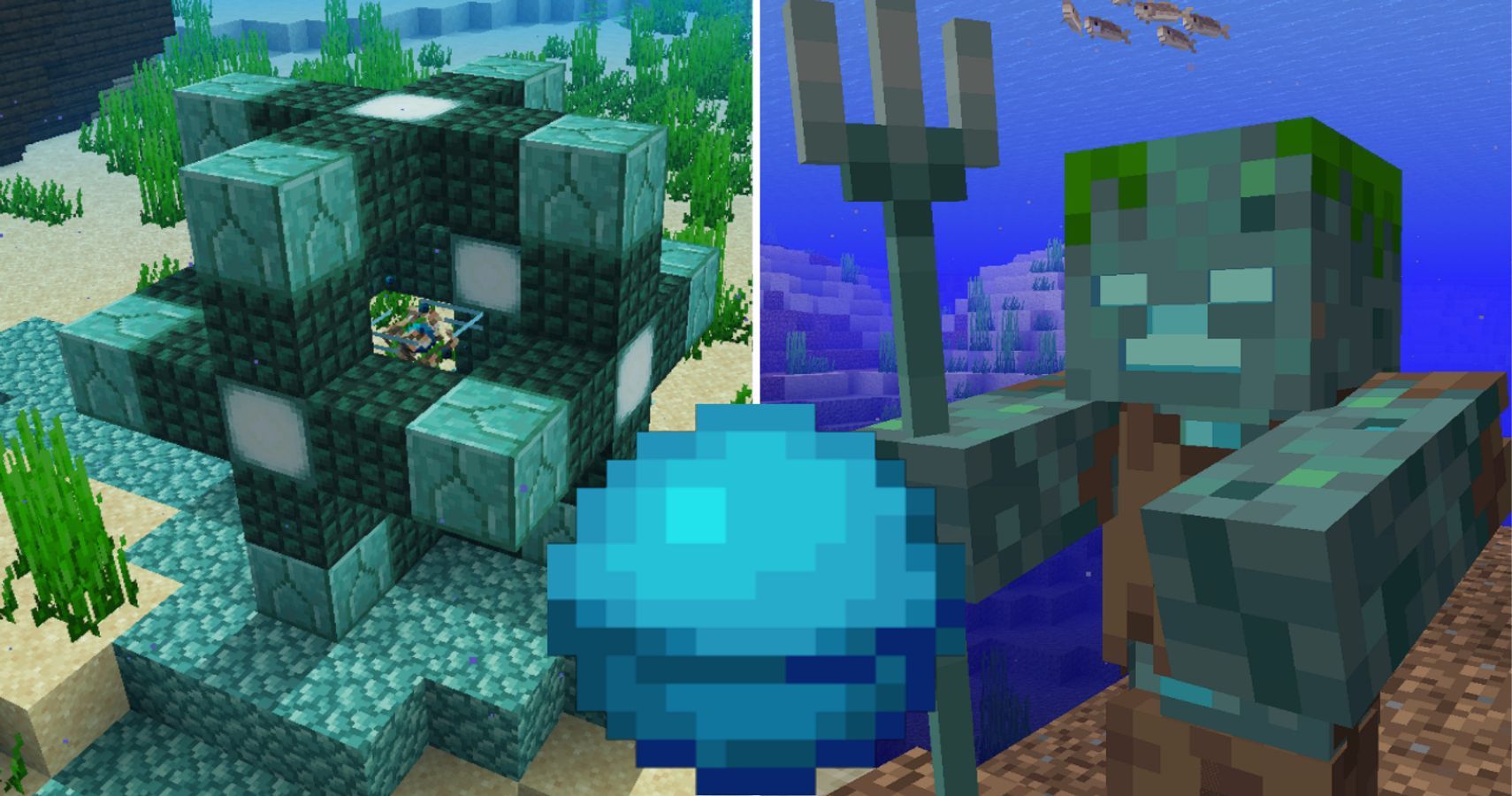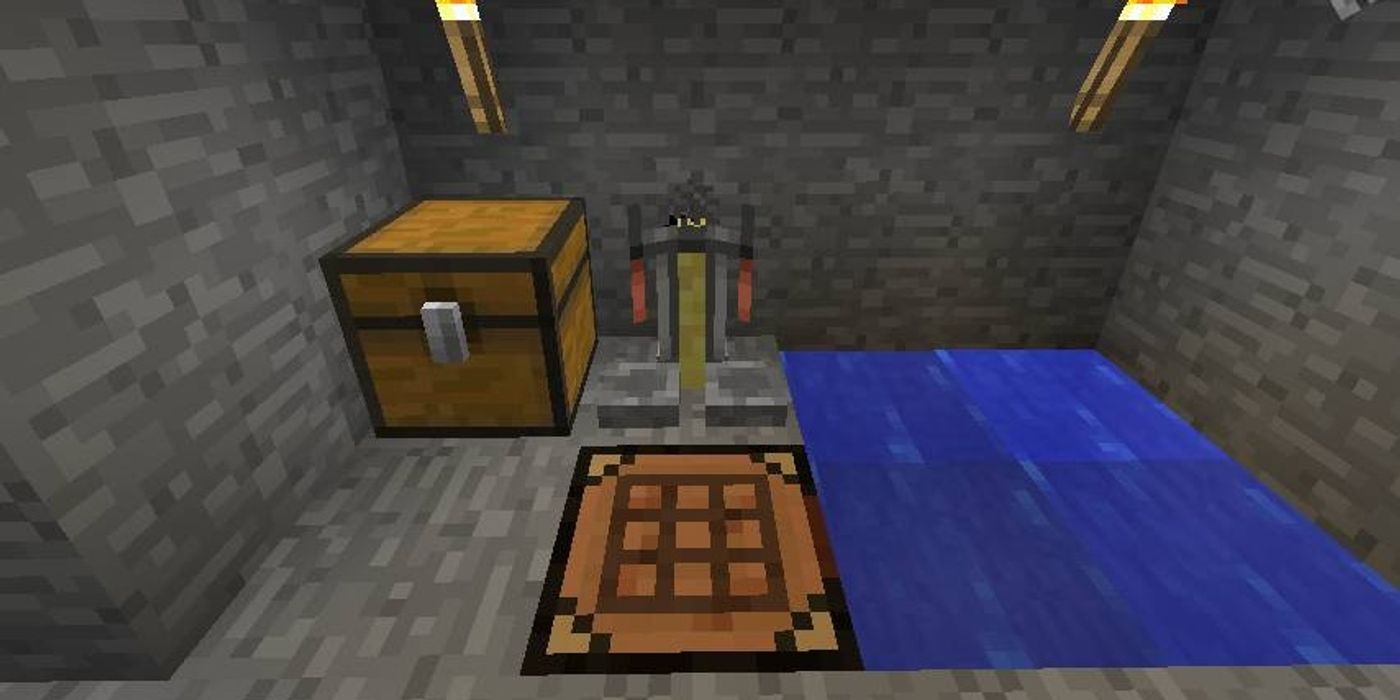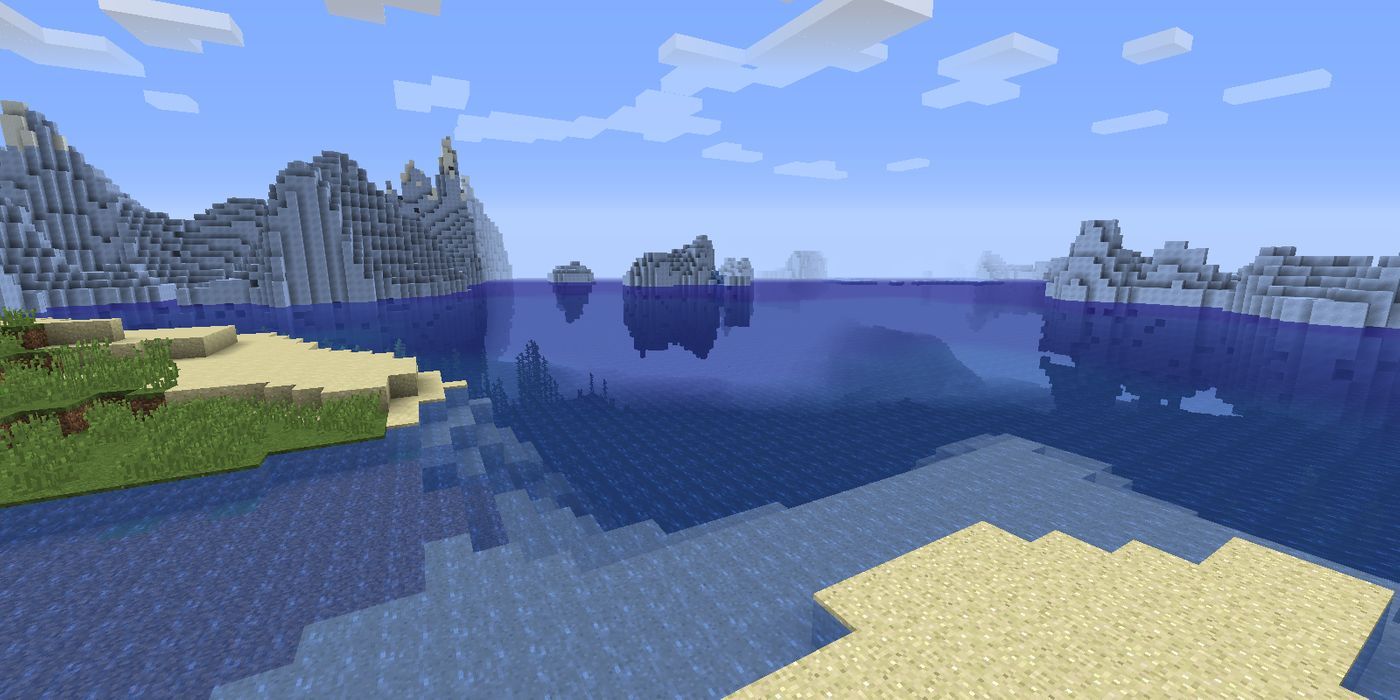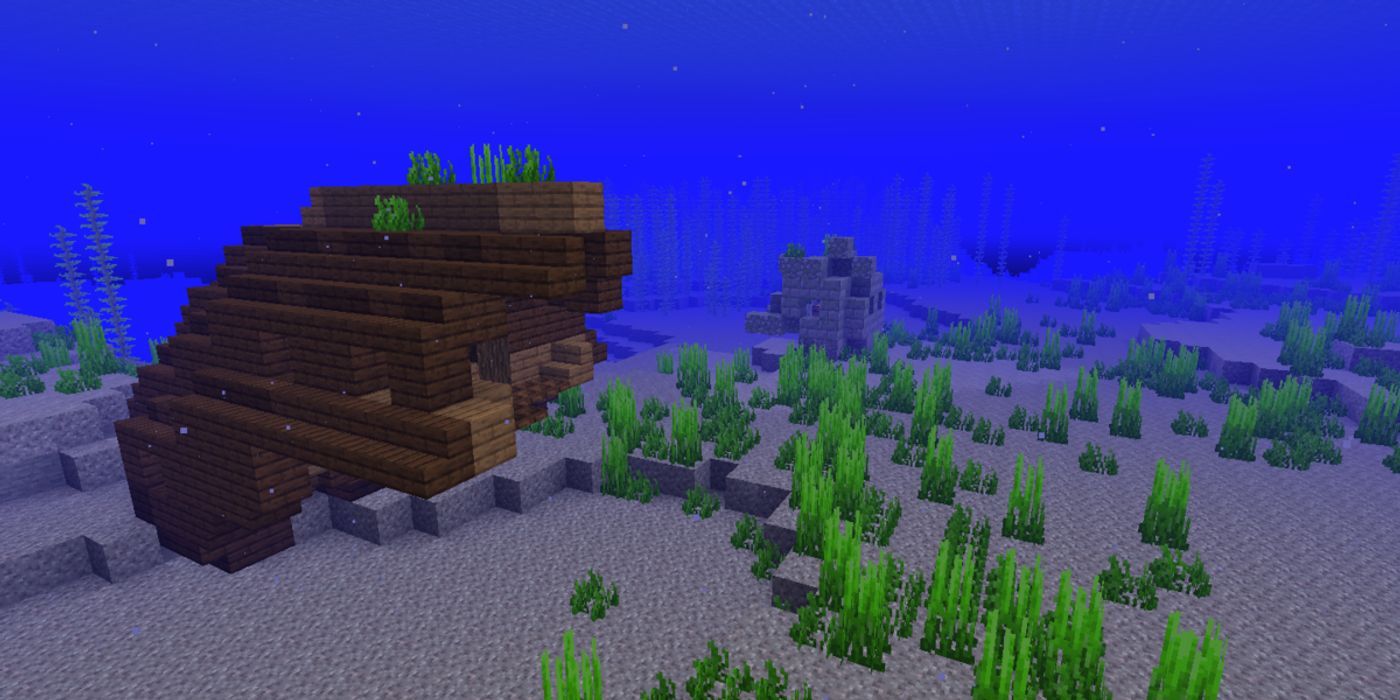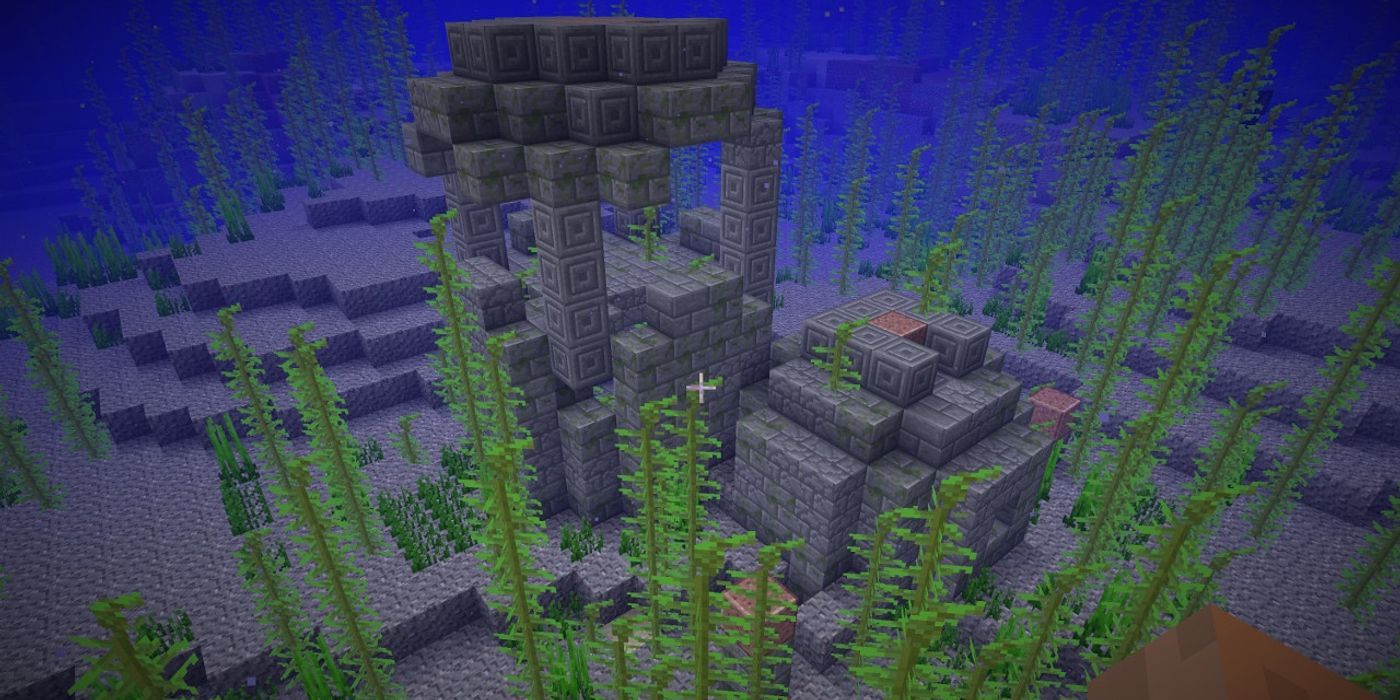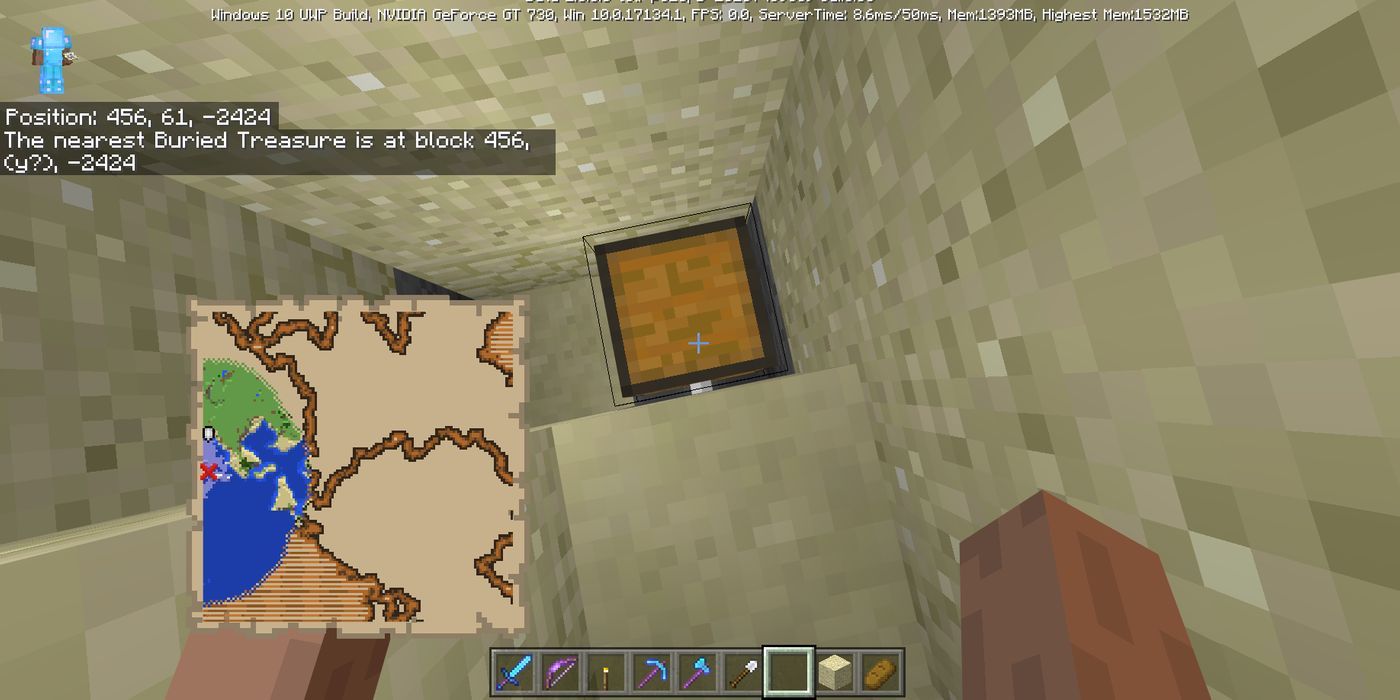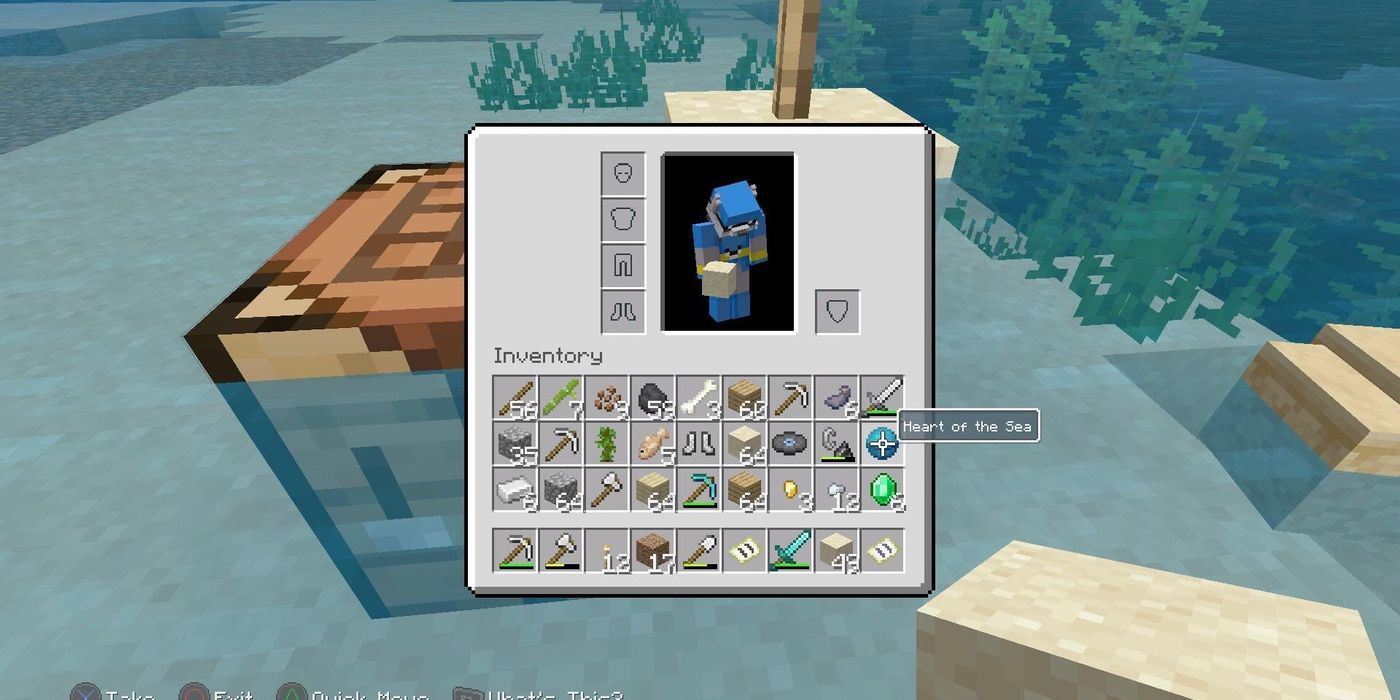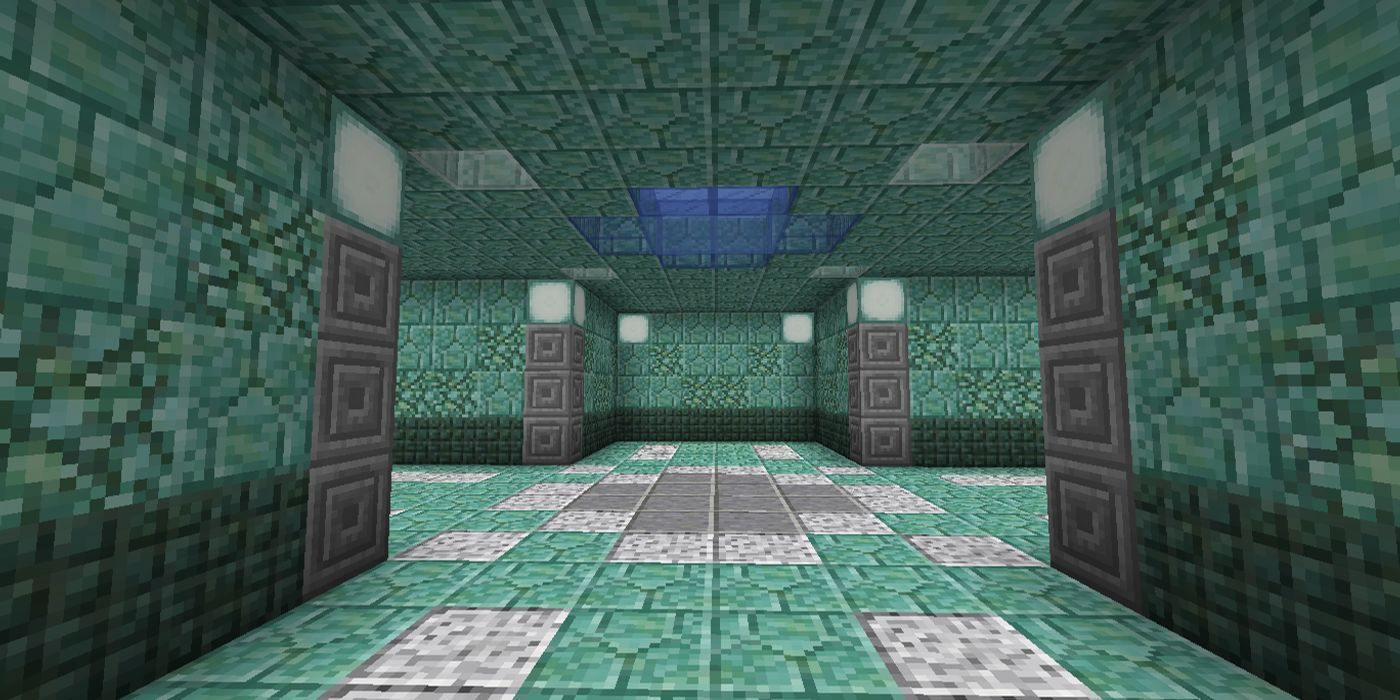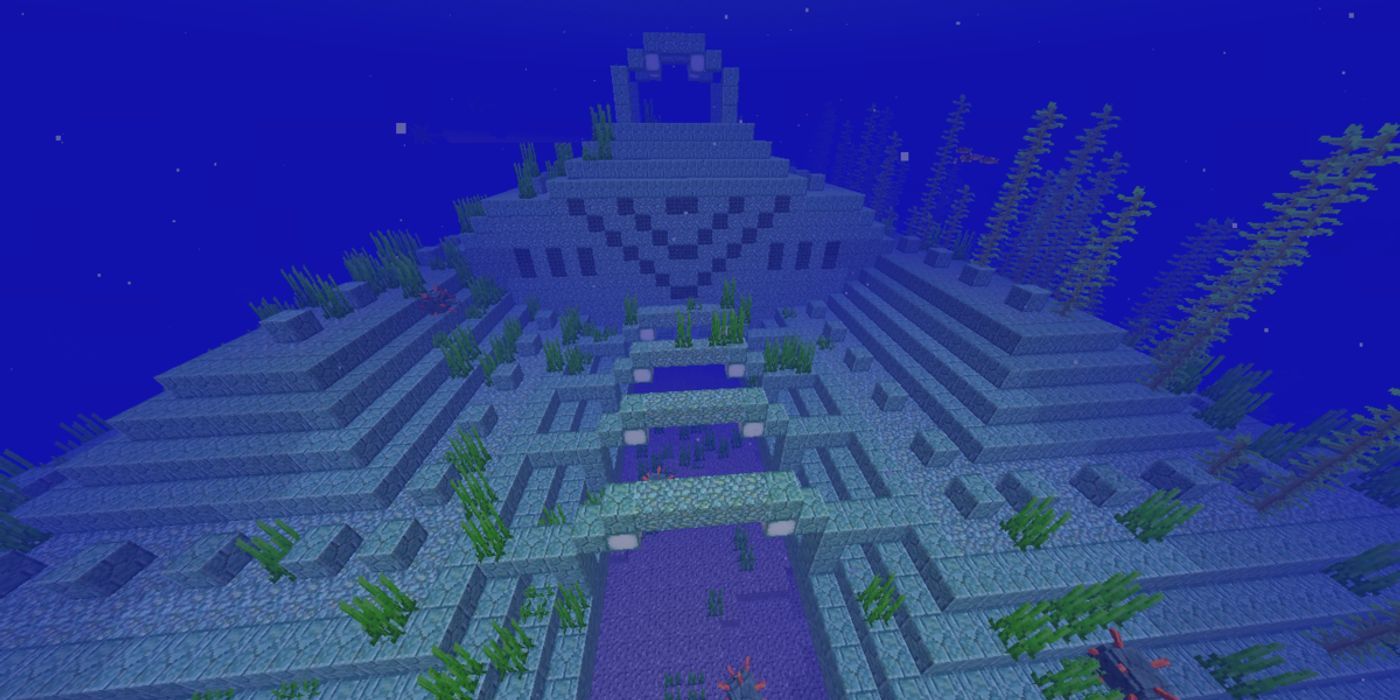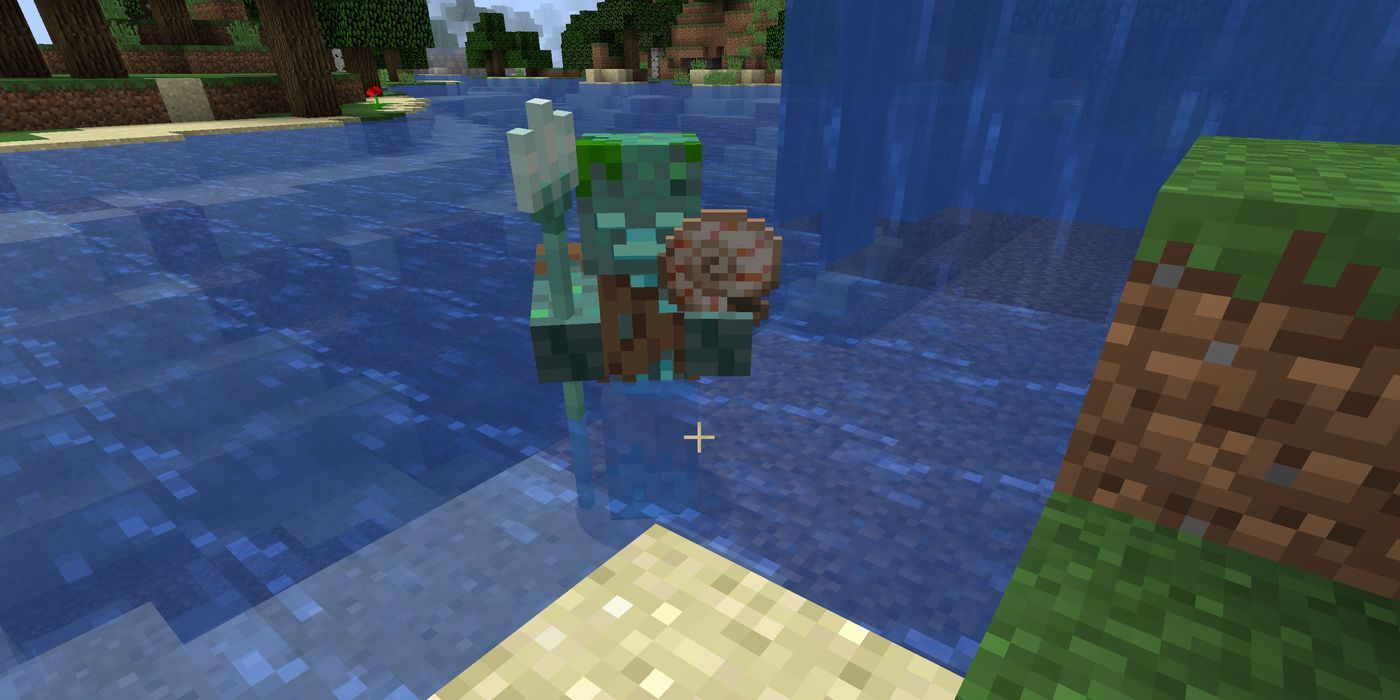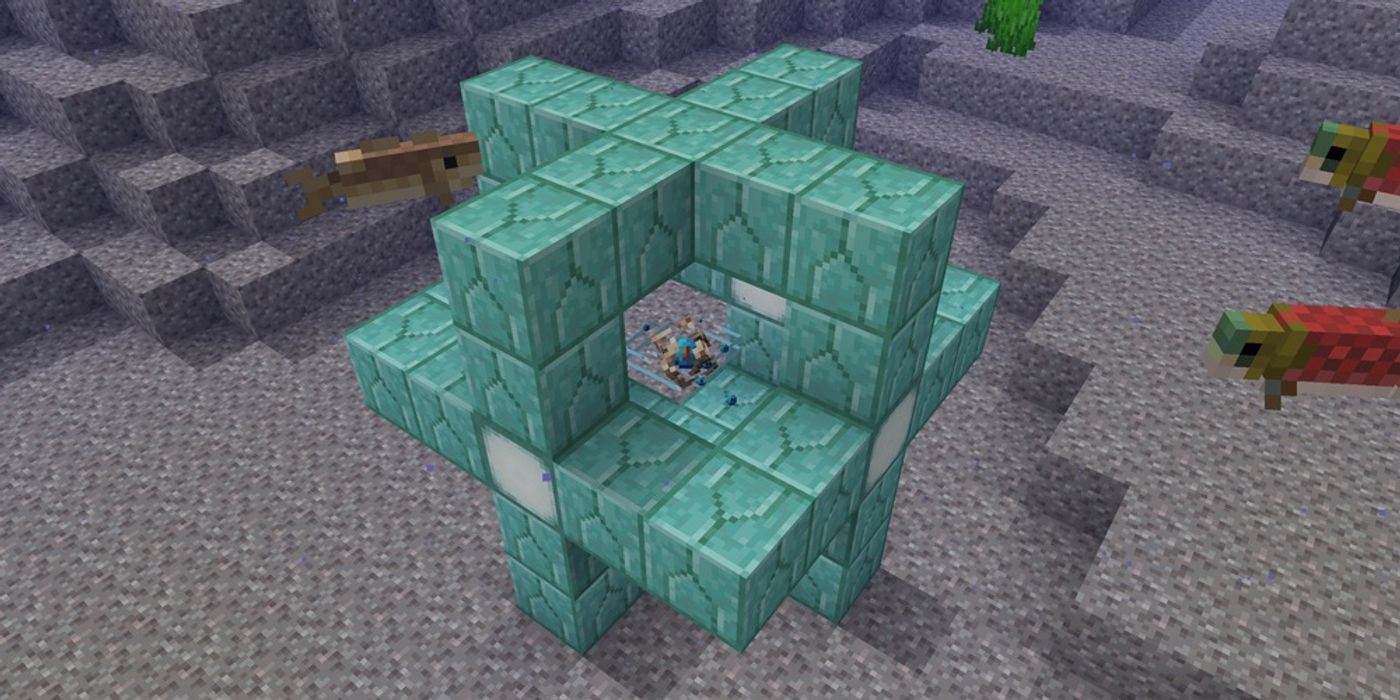Once players have learned how to survive in Minecraft, the next step is to learn how to thrive. There are countless of little things that players can do to improve their quality of life, provided they're up for a bit of a grind to get all the building materials or necessary items to make such things. One of the great milestones for any player is to build a Conduit.
The Conduit is a special item similar to a beacon, but can only be made if the player has a Heart of the Sea. This is another rare item in the game, one that can't be crafted or traded for. Instead, it has to be found in the wilderness, but with a few tricks it shouldn't be a hard task at all.
10 Preparing For The Task
The first thing a player should do is prepare for their exploration trip. To find a Heart of the Sea, they'll need to dive deep underwater, sometimes for longer periods of time. Due to this, it's either recommended to have an enchanted set of armor with Respiration III, Aqua Affinity and Depth Strider III.
Alternatively, players can craft water breathing potions which will either grant them three or eight minutes of time underwater without having to worry about air bubbles. Night vision is also recommended, so that players can spot underwater structures better from the surface.
9 Finding Right Biomes
In order to find a Heart of the Sea, the player needs to find a fairly large ocean biome. This isn't always obvious, given that some Minecraft worlds spawn the player in landlocked areas that might be a long trek away from the closest ocean.
Following rivers or getting up to a vantage point is a great start fairly early on in the game. If the player already has an elytra, the task of exploring around isn't too difficult. Any type of ocean, regardless of temperature will do, although icy oceans will be harder to excavate later on due to ice forming on its shores.
8 Shipwrecks
The first location a player should head to is a shipwreck. These are randomly appearing structures found in ocean biomes or larger bodies of water. Some shipwrecks are incredibly deep underwater and will require the player to have proper water breathing to get to.
Others, however, are closer to the surface or even almost fully out of the water. These types of shipwrecks tend to be easy to spot as they jut out of the water. Depending on the biome, the ship will be made of its native type of wood.
7 Ocean Ruins
An alternative location is an ocean ruin, which is a bit trickier to get to than a regular shipwreck. This is because these ruined areas tend to be swarming with drowned creatures, which will attack the player in a large group and sometimes easily overpower them if one of them wields a trident.
Dealing with the drowned by pulling them away from the ruins one by one is the recommended strategy. Bring a shovel along, since the chests tend to be buried under gravel and sand inside the ruins, and will have to be excavated.
6 Buried Treasure
Whether the player has come across a shipwreck or an ocean ruin, they'll most likely discover in one of the loot chests something called a buried treasure map. This is the most important item when it comes to finding the Heart of the Sea.
The buried treasure map will have an X on a random area where a chest is hidden in sand or gravel. Follow the map to the correct area and start digging. There's a 100% chance that a chest will have a Heart of the Sea. Keep in mind that treasure maps acquired from structures found within a close vicinity will yield identical maps.
5 Why Find It
At this point, the player's in possession of a Heart of the Sea, or maybe even two or three. Once these underwater structures are looted, they're actually quite abundant. Only one, however, is most likely needed unless the player is planning on a large underwater living area.
The Heart of the Sea is a vital item needed for the Conduit, which basically allows for players to breathe underwater and to have normal vision. Conduits will also attack any drowned that will approach it, keeping the player mostly safe.
4 Finding Prismarine
To build a Conduit, the player will need to get some Prismarine on top of the Heart of the Sea. An easy but somewhat time-consuming way is to try and find as many ocean ruins as possible. These structures will often yield some Prismarine shards.
Eventually, the shards can be used to make Prismarine blocks, which are used for the actual frame of the Conduit. Without it, the Conduit won't be able to power up properly.
3 Finding An Ocean Monument
For a more reliable but difficult source of Prismarine, the player should conquer an Ocean Monument. These structures are large underwater temples guarded by fish monsters known as Guardians.
Inside each temple are also three Elder Guardians, which are large white versions of regular Guardians, with the ability to curse the player with mining fatigue. This is a task of its own, but almost a necessity for those wanting to make use of their Heart of the Sea.
2 Getting Nautilus Shells
On top of finding the Heart of the Sea and gathering a bunch of Prismarine for the Conduit, the player will also need eight nautilus shells. This is perhaps the most time-consuming and difficult part of the entire task.
The best way is to make an enchanted fishing rod with Luck of the Sea III, and hope for the best while fishing for treasure. Alternatively, Wandering Traders will sometimes have nautilus shells in their inventory.
1 Building The Conduit Frame
Once all the items are gathered, the player should combine the Heart of the Sea with the eight nautilus shells to make a Conduit. Then, they should build a frame underwater out of Prismarine. A complete frame will require 42 Prismarine blocks to reach full power.
When fully powered, the Conduit will grant the Conduit Power status to anyone within 96 blocks when in contact with water, as well as attack mobs in its vicinity.

